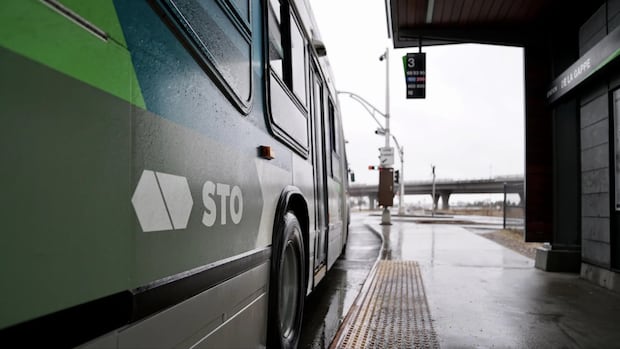OttawaThe Société de transport de l’Outaouais (STO) plans to equip all its buses with a sensor that will use AI to monitor the condition of their engines. The goal is to detect problems in advance and make the service more reliable for transit users.Gatineau transit authority awarded $1M contract to U.S.-based AI companyCBC News · Posted: Sep 01, 2025 4:00 AM EDT | Last Updated: 2 hours agoA file photo of an STO bus. Gatineau’s transit authority has awarded U.S.-based Preteckt a $1-million contract to install sensors that will monitor bus engines and then use artificial intelligence to detect potential problems. (Jonathan Dupaul/Radio-Canada)The public transit authority in Gatineau, Que., plans to use artificial intelligence to monitor the condition of its buses in the hopes it will increase fleet efficiency.The Société de transport de l’Outaouais (STO) says that by 2026, it plans to equip all its buses with a sensor that can monitor engine condition in real time.The intent is to detect issues in advance and make the service more reliable for transit users.Once it’s installed, the sensor will frequently collect data and then use AI to determine if the vehicle’s engine is at risk of failure and needs maintenance.Patrick Leclerc, the public transit agency’s director general, discussed the initiative at a meeting of the STO’s board of directors on Aug. 28.”This will allow us to detect issues in advance. [It will bring] better reliability, more punctuality and it really benefits customers,” he said in French.For the project, STO is partnering with Preteckt, an AI predictive maintenance company headquartered in Memphis, Tenn., that focuses on vehicle maintenance. The province’s tendering website shows that STO awarded Preteckt a contract of just under $1 million. The contract is set to last three years.While the goal is to improve efficiency, it’s unclear how much money the STO will save on maintenance with the project.Patrick Leclerc, the STO’s director general, says the plan will improve bus reliability and make the transit service more predictable for riders. (Radio-Canada)STO dealing with aging bus fleet, electrificationSTO’s fleet of buses is getting older, with the average vehicle age rising from eight to 11 years since the outbreak of the COVID-19 pandemic. Out of roughly 350 buses, 35 are currently out of operation.The service also performed some maintenance over the summer to get ahead of potential service disruptions.”We have buses waiting for parts to be replaced,” Leclerc said. “If we [recover] three buses per day, that [can allow us] to maintain all our services.”STO is also still waiting for funding from the province to electrify its maintenance centre, which it estimates will cost $85 million. Without it, Leclerc said STO will end up with 26 electric vehicles by 2027 but won’t have the capacity to charge them.with files from Radio-Canada’s Anaïs Desjardins
Monday, 22 Dec 2025
Canada – The Illusion
Search
Have an existing account?
Sign In
© 2022 Foxiz News Network. Ruby Design Company. All Rights Reserved.
You May also Like
- More News:
- history
- Standing Bear Network
- John Gonzalez
- ᐊᔭᐦᑊ ayahp — It happened
- Creation
- Beneath the Water
- Olympic gold medal
- Jim Thorpe
- type O blood
- the bringer of life
- Raven
- Wás’agi
- NoiseCat
- 'Sugarcane'
- The rivers still sing
- ᑲᓂᐸᐏᐟ ᒪᐢᑿ
- ᐅᑳᐤ okâw — We remember
- ᐊᓂᓈᐯᐃᐧᐣ aninâpêwin — Truth
- This is what it means to be human.
- Nokoma











